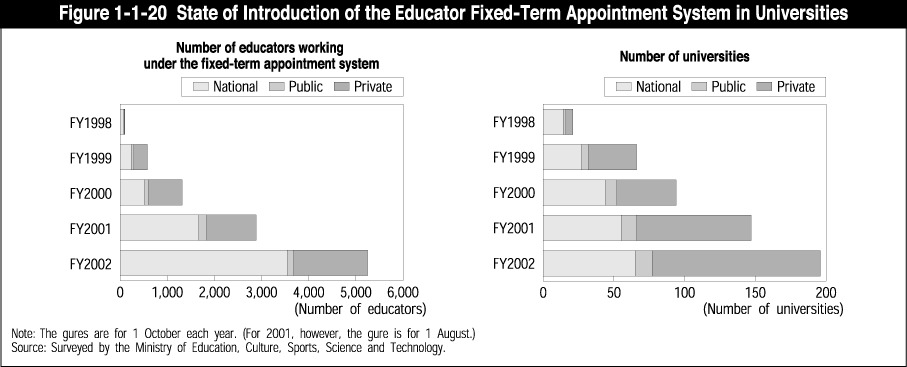| Home > Policy > White Paper, Notice, Announcement > White Paper > FY2003 White Paper on Education, Culture, Sports, Science and Technology >Part1 Chapter1 Section4.2 | ||
So that universities can more easily form organizations that flexibly respond to the development of academic research and changes in social demands, from 2001 it became possible for organizations except courses and subjects *2 to be established by the decision of a university. Furthermore, with a view to placing importance on educational functions and proceeding with the recruitment of human resources possessing outstanding experience and skills, such as people good at handling practical matters, the restrictions concerning educator qualifications have been largely relaxed.
| *2 Courses and subjects |
The smallest organizations to which educators belong, set up in faculties and departments. "Courses" are established in academic fields as a body of professors, associate professors and assistants as required for education and research; "subjects" are run by single or multiple professors, associate professors or lecturers as required for education.
Increasing the mobility of educators is extremely valuable to increase the ability of the educators, themselves, and revitalize education and research in universities. Under the "Law concerning the Fixed-Term Appointment of Faculty Members at Universities" enacted in 1997, the introduction of a fixed-term appointment system by the decision of universities became possible. The number of universities that have introduced this fixed-term appointment system and the number of educators working under it has been increasing year after year.
At the same time, efforts for the public recruitment of educators are being promoted by publicly announcing the state of implementation of the public recruitment system in universities, and the number of universities adopting this system is increasing ( Figure 1-1-19 ).
In February 2002, the "Basic Guidelines concerning Improving the Mobility of Researchers" (the guidelines indicate the items universities, etc. need to be aware of when drawing up a "plan for increasing the mobility of research human resources" that shows the applicable policies of the fixed-term appointment system and the public recruitment system), established by the Council for Science and Technology Policy, were distributed to universities to promote further increases in mobility ( Figure 1-1-20 ).


| Back To Top | MEXT HOME |